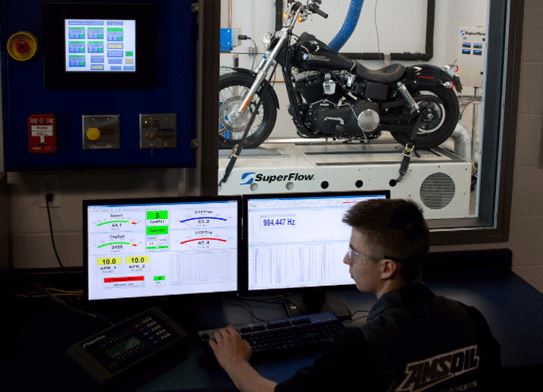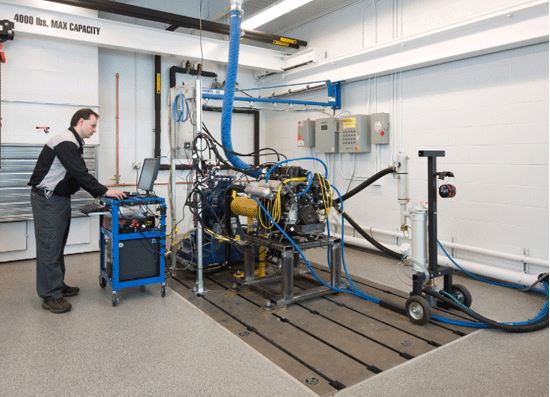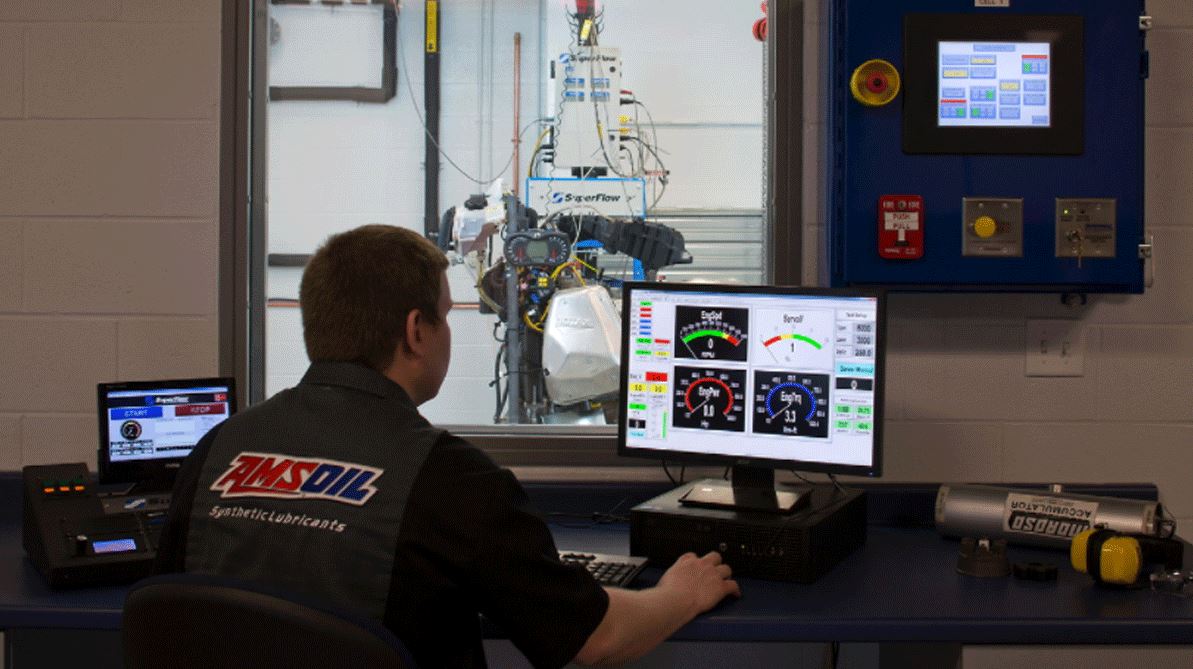A Look Inside the AMSOIL Mechanical Lab
The AMSOIL mechanical lab lets us perform testing that takes our products to the next level.
by John Baker|February 11, 2022
The AMSOIL mechanical lab, affectionately called the “dyno” or “AML,” draws gearheads to itself like eccentric vehicle builder Gordon Tronson draws a crowd. If you can’t find someone in their office at AMSOIL, chances are you’ll find them down in the dyno. Noted builder Kenny Hauk even drove all the way here to dyno his Mopar* Hellephant* crate engine not long ago.
An Exclusive Look at the AMSOIL Mechanical Lab

The mechanical lab is where we conduct much of our product testing and validation. The legend of the diesel world himself, Gale Banks, visited AMSOIL headquarters and toured the dyno recently. The level of care we put into product testing struck him so much that we thought folks out in the digital realm would like to take a peek inside our mechanical lab, too.
Check out the video for your tour.
You’ll find out that the AMSOIL dyno consists of three cells, each with water systems, air systems and fuel systems to support whatever type of testing we’re doing. On any given day, you might hear a two-stroke snowmobile engine in full-on “braaap” mode, a V-twin motorcycle rumbling away or a V-6 howling like a banshee.
We test everything from passenger car engines to powersports equipment to lawn and garden equipment in the dyno. Not long ago, we tested a racing engine you could hear nearly on the other side of the building.
The main purpose of the AMSOIL mechanical lab is to validate lubricant technologies for product development and for comparative analysis to ensure AMSOIL makes the best products possible.

The Dyno Lineup
In Cell 1 we have a SuperFlow 902S water brake, while the Land & Sea 7-inch dyno is set up to a custom chainsaw installation.
In Cell 2 we have a Midwest 1014 eddy current dyno. It controls from 2 to 6,000 rpm and up to 175 hp. We use it for passenger-car motor oil development. We also frequently run small-engine testing in Cell 2.
Cell 3 contains a SuperFlow CycleDyn eddy current dyno we’ve used for motorcycle, dirt bike and UTV testing.
Airing it Out
Engines are sensitive to combustion air, so we have a Munters combustion air unit that provides 3,000 cfm of humidity-and temperature-controlled air directly to the engines.

Cooling it Off
We perform a lot of steady-state dyno testing compared to performance facilities that might run short-term tests, so we need a lot of cooling and water capacity. The 4,000-gallon water system supplies cooling water and brake water to the test cells along with a 60-ton evaporative chiller. Regardless of the amount of horsepower or length of the test, we can maintain the temperature of our supply water at all times.
All of our fuel, air and water systems are controlled via a computer interface. It can monitor certain conditions, like temperature or pressure, and respond automatically in the absence of human intervention.
The AMSOIL Mechanical Lab Pushes the Limits
In our ongoing search for maximum oil performance, the mechanical lab provides the capability to ramp up the severity of our tests. This allows us to dial up the heat, load and test length to separate high-quality oils from pretenders.
One oil might sputter, cough, choke and just fall its way across the finish line after 100 hours of testing, while another oil might breeze past 100 hours without breaking a sweat. Most high-quality oils are going to do OK in normal operating conditions.
So, if you want to see what oil is going to protect better in severe conditions, you have to design the test to provide that information. Determining which oils hit the mark of greatness is what we want to do here.
Post-Test Inspections
In addition to the test facilities, we have a large work area. Everything off-test moves to the shop area, is disassembled and laid out prior to photography for inspection.
Operating our own facility allows AMSOIL to make decisions quickly and design testing to help differentiate high-quality oils, which is something that isn’t readily available outside of developing your own testing.
This facility allows us to perform the testing that takes our products to that next level. Other companies just can’t do this.

